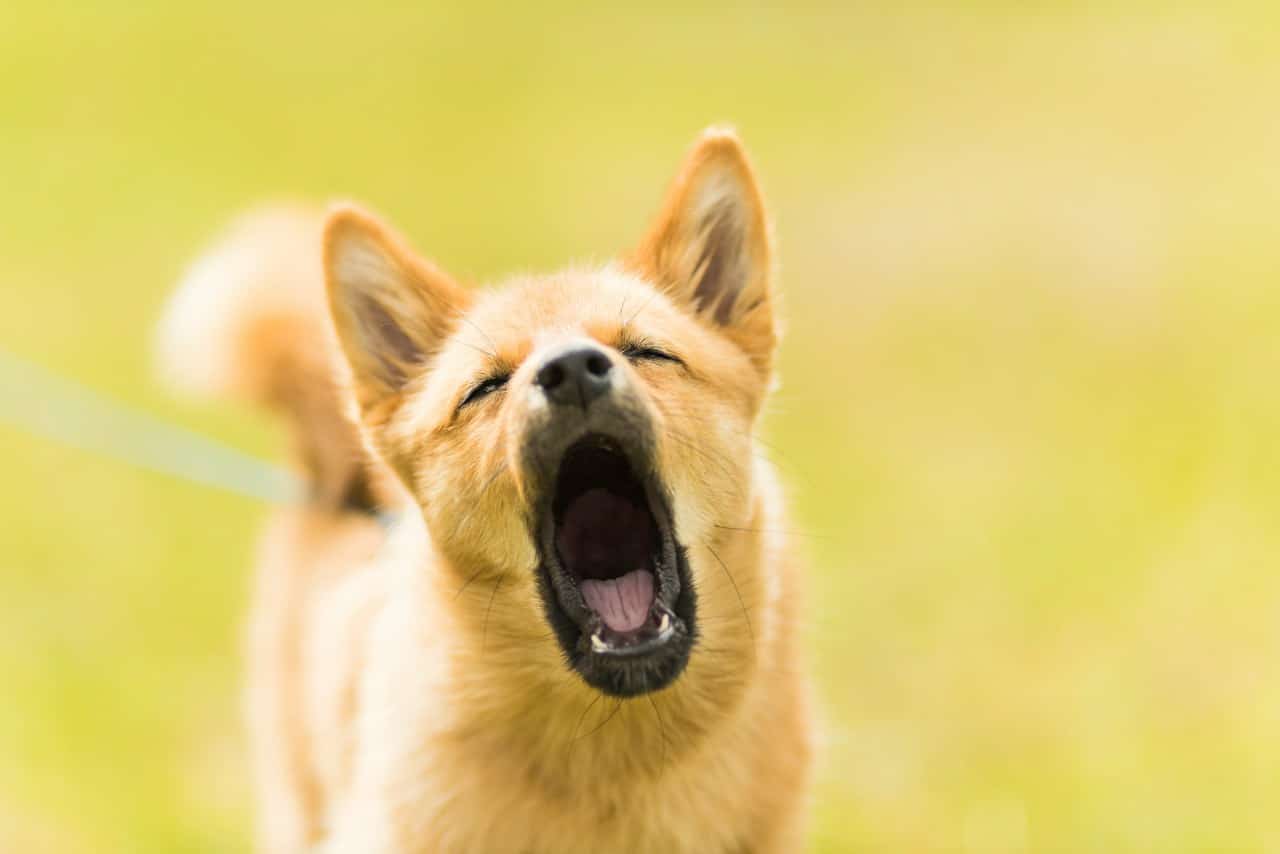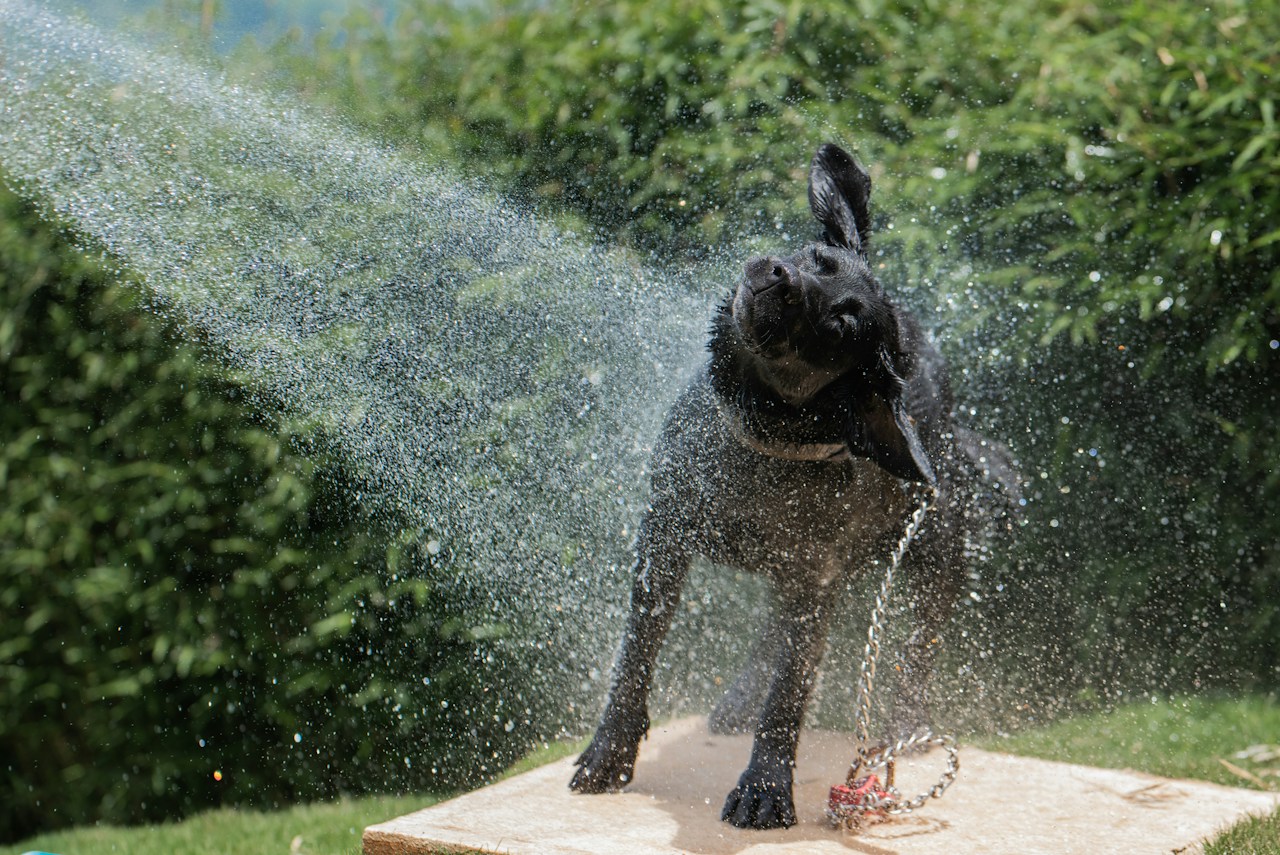Learning to communicate with our dog is essential to achieve a balanced and positive coexistence, as well as to improve the bond with him and understand what he is trying to tell us at all times. On many occasions, poor communication between the dog and the man can lead to the appearance of unwanted behaviors, mainly due to a lack of understanding in non-verbal communication, that is, body communication.
In this Scoobydog article we will help you understand in a general way what the language of dogs is like and the signs of calm that they transmit to us. Read on to learn how to communicate better with your dog and to understand what he’s trying to tell you.
Do all dogs know calm language and signals?
The beginning of the learning of the communication of the dog begins from his birth and lasts, approximately, until the three months of life. In this period, the dog learns a language that will accompany him throughout his life and begins with his mother and brothers , who teach and guide him correctly.
The most important period for the recognition of language is the socialization of the puppy , which is between three weeks of life and three months. The early separation of the puppy can have serious consequences, such as the lack of social behavior patterns . However, many more consequences can appear, such as lack of inhibition of the bite, fear or stress among many others.
Therefore, not all dogs are capable of interpreting and recognizing the signs that we are going to show below, although these are specific cases in which we observe premature weaning or isolation of the puppy, common in shelter dogs.
How should we communicate with our dog?
Before getting started in the language of dogs and the signs of calm, it is essential to know how communication should be between us and the dog, take note:
- Always use a high-pitched tone and a low volume so that the dog does not mistake your words for a punishment. Also, you have to remember that their ears are very sensitive, so they don’t need you to raise their pitch to hear you.
- Always try to relate the words to specific physical signals, this way your dog will understand you better and it will be easier to communicate with him in noisy environments.
- Use positive reinforcement to communicate with him, various studies show that he understands you much better when you avoid punishment.
- Whenever you communicate with your dog, make sure there is clear eye contact.
- Respect the dog at all times, especially if you notice that he is uncomfortable or overwhelmed, changes his situation, or uses a higher reinforcement to motivate him.
- Do not use punishment to communicate with your dog, if he does not understand you, move and repeat.
Signs of calm in the dog
1. Yawn
Yawning, as a sign of calm, is usually accompanied by other signs, such as ears back, head turns or looking sideways. This signal usually indicates discomfort or that they do not understand what we are asking.
We should not confuse this signal with a yawn when waking up, for example.
2. Relamido
Except when they have just finished drinking water, licking their lips is another of the most common signs of calm. It usually tells us that the dog “does not look for problems” and may be accompanied by a low head or head to the side. The dog is asking us for space or a break in training.
3. Lick a person
We generally associate licking humans with the affection and affection of the dog and, on occasions, this is usually the case, especially if we reinforce this behavior in a positive way. However, an excited lick can indicate that the dog is stressed and tries to relieve the tension that may exist by licking us, something that he knows we like.
When he licks us out of nervousness, not affection, it is usually accompanied by other signs of calm such as backward ears, head turns, and nervous movements.
4. Head turns
It is likely that when you approach your dog, sometimes to give him a kiss, or try to place something right in front of him, the dog will turn his head. It usually means discomfort and is telling us to respect your personal space. In this case, it may show other signs, such as panting, ears back, or licking. You can also use this signal with other dogs to show that you are calm and not looking for trouble .
5. Push with the muzzle
This is a very positive sign and indicates that our dog is seeking our attention or affection . This behavior has its origins in its puppy stage, when the dog looks for its mother’s breasts by pushing with its muzzle.
6. Eyes narrowed
This signal of calm usually indicates well-being and safety in the dog . His origins are also in his puppy stage, when he was with his mother and felt very comfortable. It’s a very good sign.
7. Sniff the ground
If your dog shows that he is sniffing the ground before going to introduce himself to another dog, you should be very happy, since this is a sign of calm from a polite dog. You are trying to communicate that you are not seeking trouble or invading your personal space.
8. Walk in circles
When two dogs walk and subsequently sniff each other in circles, it is usually a very positive sign of calm between them. They greet each other in a cordial and positive way .
9. Stretch
This posture can have different meanings:
- It is common to observe a dog in this position when it is asking another dog to play . In this case it will act in a cheerful and positive way, making soft tail movements. In this case it is a friendly dog.
- However, if we observe our dog stretching while using other calming signals , such as licking his lips, wagging his tail vigorously and turning his head, we have a dog in front of us politely asking for space, that we leave him alone.
10. Stay still
It usually happens when we take our dog to a new pee, where he does not know the dogs that are there. Adopt a still posture and allow others to sniff you easily. It is a sign of calm that indicates that the newcomer is polite and allows others to know him .
Remember that when a dog stays completely still because we are yelling or punishing him, he is not showing submissiveness, he is performing a defenseless posture, since he does not know what to do or where to hide so that we end the punishment. Do not forget that reaching this point is very negative and that we should not scold our dogs, much less violently or surly.
11. It shakes
This signal tells us that the dog is quite stressed and seeks to release its tension by shaking itself completely. A flight and other signs of calm generally follow.
12. Belly up
In this case, the dog that is lying down is submissive towards the other dog, either out of fear or other reasons. It is a cordial posture , the dog does not look for problems.
Remember that when the dog shows us its belly, it is not a sign of submission, but it is a sign of calm. In this case, the dog tries to convey to us that he feels full confidence in us and that we also please scratch his belly.
13. Urinate
Urinating is undoubtedly a marking signal, but they also use it together with other dogs to make themselves known. He wants the other dogs to know his identity and urine so they can smell it later.
Other signs of calm
It is important to note that there are many signs of calm in the dog that, on occasions, go completely unnoticed. Here we explain some more:
- Raise the front leg
- Raise the hind leg
- Look askance at
- Lie down (along with more signs of calm)
- Ears back
- Shrink
- “Smile”
- Look at the ground
- Walk away
- Turn your back
- Look away
- Relaxed mouth
- Mouth slightly open
- Relaxed tail
- Tail between the legs
- Smooth tail movements

